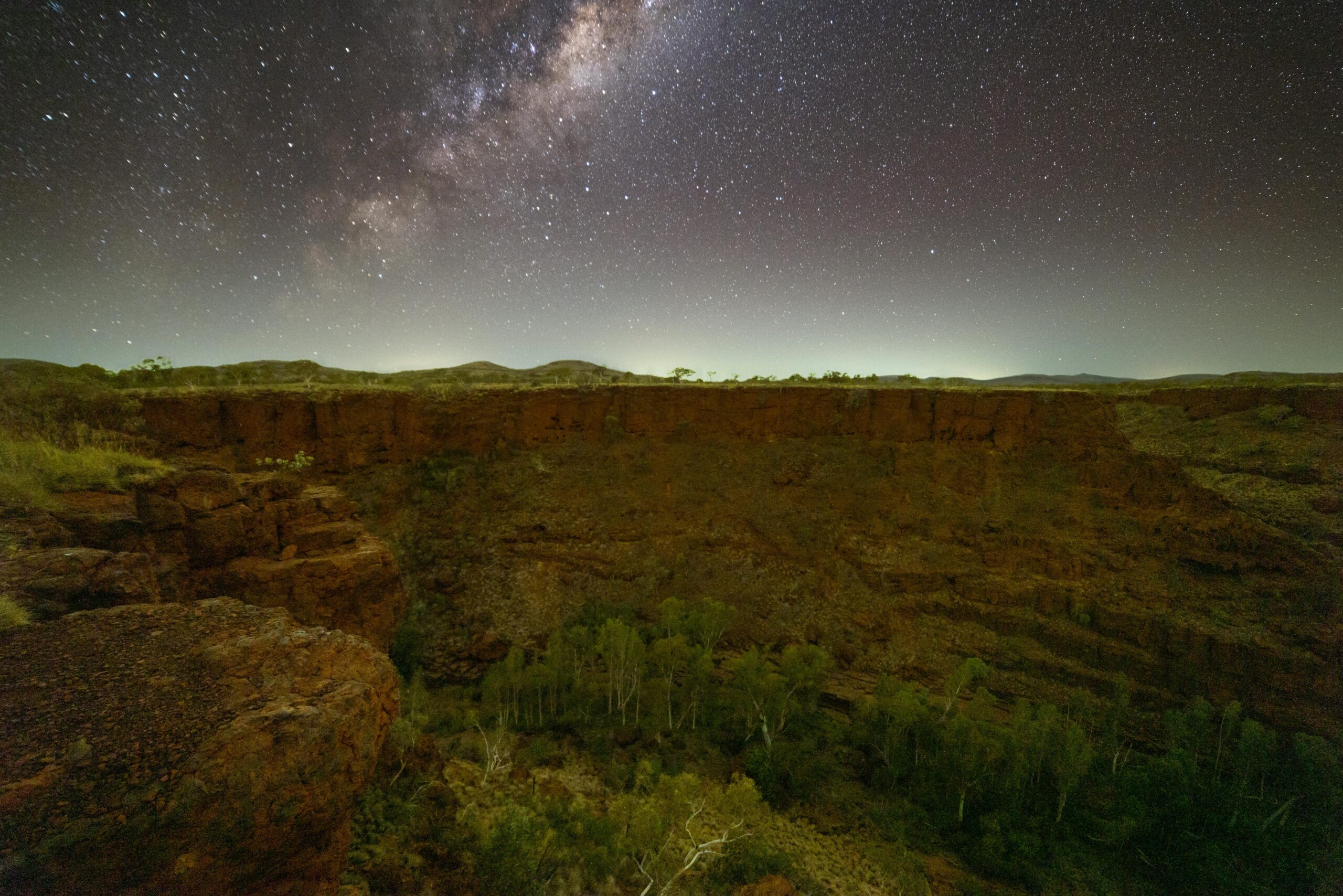Karijini National Park features in the list of some of Australia’s most gorgeous natural gifts. Famed for its impressive gorges, waterfalls, and swimming holes, this park showcases the true natural beauty of the Australian outback. Karijini National Park, located deep in the heart of Western Australia’s Pilbara region, is a haven for travellers seeking to connect with nature. Visitors find both peace and adventure around every corner as they explore the geological wonders that have been created over millions of years.
Peeking into the History of the Park
Karijini National Park features high cultural and historical significance. This is the traditional Country of the Banyjima, Kurrama and Innawonga people, who have been custodians of this land for tens of thousands of years. The park itself is defined by its stunning landforms, but it is also a place filled with cultural stories and knowledge that are connected to spiritual significance. Visitors marvel at this wonderland and walk away with a sense of reverence for the delicate balance between nature and ancient wisdom.
Spectacular Gorges and Waterfalls
One of the park’s most stunning features is the gorges. Tall, reddish rock faces rise up, framing quiet, glassy pools that sparkle in the sunlight. Of these, Hancock Gorge and Weano Gorge are the most famous, with their thin paths and stunning views. Though these places welcome you to immerse yourself in their beauty, they also remind you about precaution because their trails can be a bit challenging at times.
Waterfalls have their own peaceful beauty in the park. The park’s only permanent waterfall, Fortescue Falls, is great for cooling down after a long walk. A short distance away, Fern Pool is a serene escape nestled among the greenery. The sounds of the water crashing on the walls of the cliffs that make up these places are like a metronome of peace, perfect for reflection or simply taking a moment for yourself.
Adventure and Exploration Opportunities
If you like to get active, Karijini National Park will keep you busy. Hiking trails are designated and can vary from easy to moderate, and some can also be quite demanding or more demanding circuits. These trails are often suitable for cycling, and some may even feature dedicated cycling spots. They must be used with adventure and caution. The Oxer Lookout offers a stunning view of four meeting gorges, one of those experiences that leaves many a visitor speechless.
Other popular activities in the park include canyoning, rappelling, and swimming. Each activity offers a unique perspective on its rugged beauty. Be it the chilled rock pools you step into or the ascendency of steep paths, every experience resonates with the forces of nature and the balance of time.
Flora and Fauna of Karijini
It is home to many plants and animals within an ecosystem that has adapted to the Pilbara’s hot climate. Mountains are green (in case you were not already there), and wildflowers burst through the mid-winter chill, brightening the landscape with colour. Spinifex grass, different sorts of acacias, and eucalyptus trees produce a stable habitat for wildlife.
Visitors are likely to be greeted by kangaroos, wallabies, and various species of birds, as well as wedge-tailed eagles that hover in the sky above the cliffs. Common sights include reptiles such as goannas and skinks, which, if you look carefully, can be found lying on the rocks in the sun. This balance of life and ground gives richness to each moment spent within the park.
Planning a Visit
When travellers prepare ahead of time, their trip to Karijini National Park will be that much easier. Visitors find supplies and a place to stay in the nearest towns, Tom Price and Newman. While the solitude is enticing for the park, it means travellers need to be cautious during their travels. Bringing enough water, fuel & suitable clothing ensures a safe & enjoyable visit.
Visiting the park is best during the cooler months, that is, from May to September. Highs are comfortable, and the chance for heat-related suffering is minimised. This is the time of year when the park’s natural pools are probably most inviting, and the landscape shimmers in fall, dappled, golden light.
Responsible Travel and Loving Mother Nature
It is the fragile environment where imposing structures cannot be built that keeps Karijini National Park as beautiful as it is today. The public is urged to observe all conservation restrictions, remain on designated trails and leave no trace. Taking simple actions such as not leaving litter behind, not disturbing wildlife, and not walking through sacred sites helps preserve this wonderful place for future generations to enjoy.
This adds to the experience by learning about the local culture and history. Embracing the Indigenous heritage within this space helps to better understand the connection that people have with this vast land, which is exactly what Karijini is known for: the people of Karijini.
Conclusion
Roaming the Karijini National Park grounds you in nature, but even as its scenery ignites your synapses, the park is more than a series of stunning frames to ponder. The gorges, waterfalls, and wildlife embody the heart and soul of unspoiled Australia. People walk away with memories formed in hushed moments spent near icy water and expansive vistas, looking past the shattered reds of canyon walls.
Karijini National Park, a place that resonates with the body and spirit of true Australia, is a destination for those seeking peace, exploration, and the incredible magic of Mother Nature.
